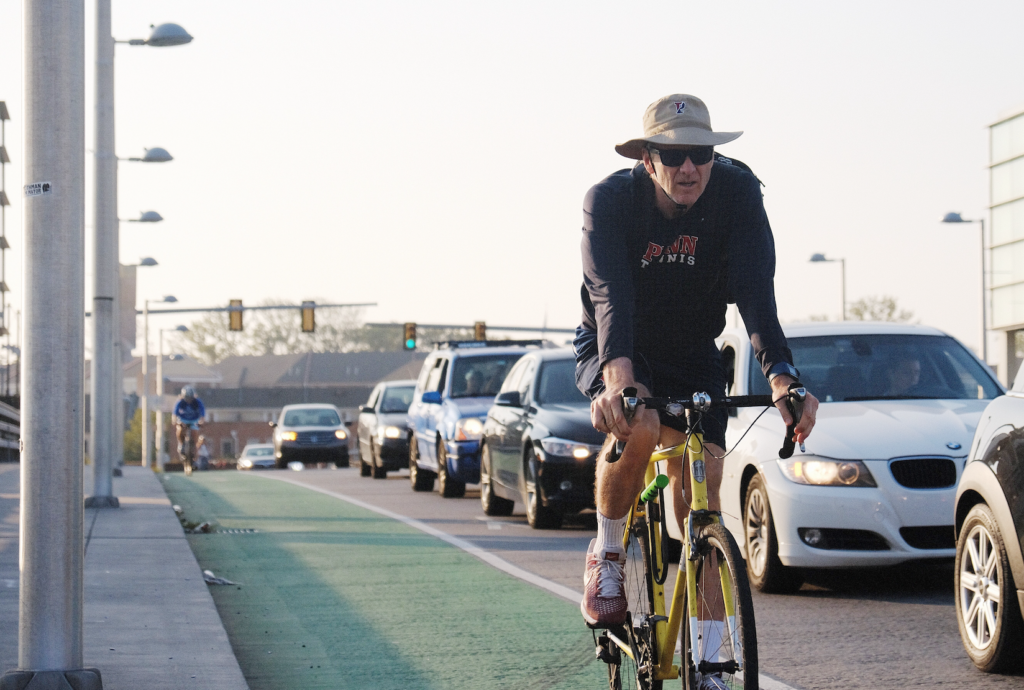The Bicycle Coalition of Greater Philadelphia is dedicated to creating a safer Philadelphia region for all road users. That’s why we introduced Vision Zero to the city’s mayoral candidates in 2015, and why, in 2018 we continue promoting infrastructure and education changes that we believe will eventually lead to zero traffic deaths.
That said, there is a large difference in opinion about which road users are the safest, currently, and which are unsafest.
I regularly receive emails and phone calls from people around the region, complaining about that bicyclist they saw that one time who ran that red light or stop sign. And even though no one was hurt, well, the Bicycle Coalition shares some responsibility for “not doing enough” to stop that bicyclist from breaking the law.
Usually, those people haven’t heard of the Bicycle Coalition’s “Bike Nice” program, a public education campaign to help cyclists understand the rules of the road so as to create a better relationship between cyclists and pedestrians. And they usually don’t know about our Urban Riding Basics or Learn To Ride classes, both of which are hands-on courses teaching anyone in Philadelphia who wants to learn how to ride, or learn how to ride better.
But that’s OK. Because there’s a much bigger problem at hand here. And that is, contrary to the popular belief of people who don’t ride bicycles, cyclists and motorists essentially break the law at the same rate. Studies and anecdotes over the years have shown this to be true, over and over again.
And when cyclists break the law, the end result is often an annoyed onlooker. When motorists do, the end-result can easily be the death or serious injury of another road user.
The most recent study showing this to be true comes from the Florida Department of Transportation, where researchers mounted cyclists bikes and motorists cars with sensors and recorded their movements for 2,000 hours.
As noted by StreetsBlog,
[B]icyclists were in compliance with traffic laws 88 percent of the time during the day and 87 percent of the time at night. The observed compliance rate for drivers who interacted with participants was slightly lower, at 85 percent during the day. (There weren’t enough nighttime driver observations to report a compliance rate.)
During the study period there were three incidents involving right-turning motorists that were characterized by researchers as “close calls.” Two were caused by drivers who failed to yield. In one case the cyclist crossed during the “Do Not Walk pedestrian signal.” This implies he was riding on the sidewalk, though the study does not specify street conditions.
There were 21 “no close call” right turn instances involving motorists and cyclists. Cyclists were compliant with the rules in every instance, and in four cases drivers failed to yield.
The study, which recommended safer infrastructure as a result, was not without shortcomings, but is just the latest evidence that the outrage toward cyclists is misguided in more ways than one.
The Bicycle Coalition doesn’t promote anyone breaking the law—quite the opposite—but we are trying to change the common conception that motorists breaking the speed limit, rolling through stop signs and parking in the crosswalk is just the cost of living in a world in which people use cars and trucks, and that traffic deaths are to be met with a shrug. They’re not. The aforementioned bad motorist behavior is statistically and anecdotally much worse than anything a cyclist could possibly do with their 30 pound vehicle and it’s up to all of us to turn that misguided anger into a proactive mission to change our behavior on all fronts and bring Philadelphia’s traffic deaths down to zero.


Powerful people don’t like their privilege challenged. People who only drive incorrectly think they’re entitled to all the power and space on the roadway, and people who claim space to walk and ride bikes challenge that.
I like the interpretation of this study but it needs to be taken with a note of caution. Is the population density/traffic volume in Florida where the study took place, comparable to Philadelphia? Unless it was done in the Metropolitan Areas of Tampa-St. Petersburg, Miami, Jacksonville, or Orlando; I would doubt it. The driving culture in Florida is different than in Philadelphia. People in Philadelphia are much more likely to be in a hurry, to be stressed than in Florida. This would lead to potentially more accidents and deaths involving cars, trucks, pedestrians and bicyclists.
I heard that NYC set an all-time low in auto deaths in 2017 but the number of cyclists killed increased from 16 to 23. Therefore, I doubt that cyclists’ at fault behavior is statistically insignificant from motorists’ at fault behavior; although I do not have information about the causes of the cyclists’ deaths in NYC – another short-coming.